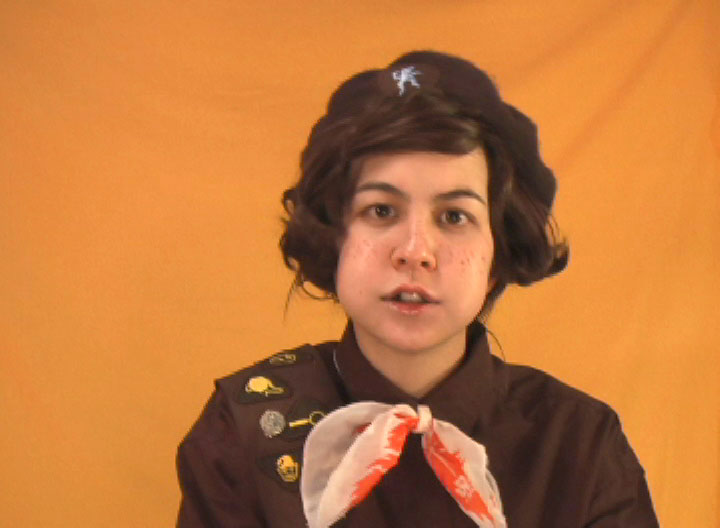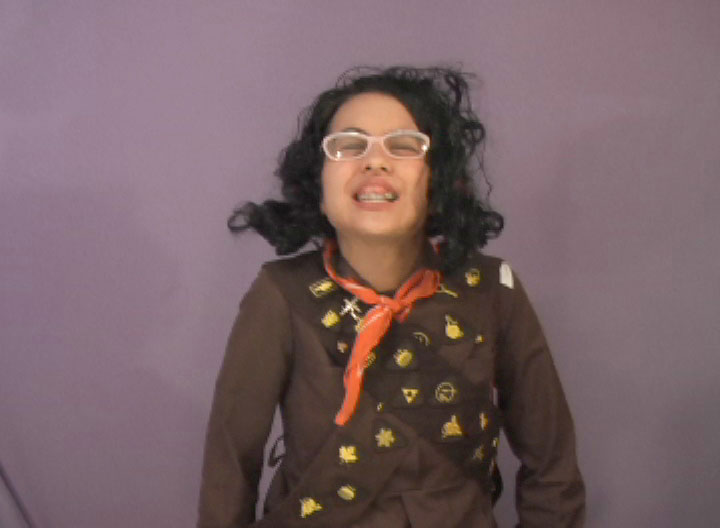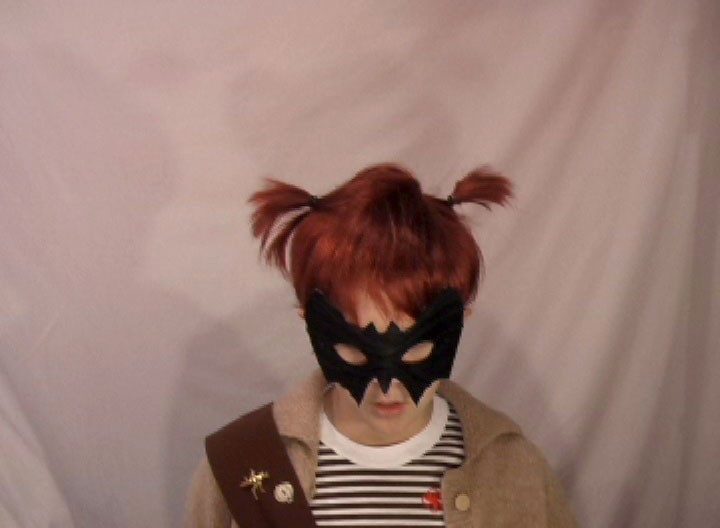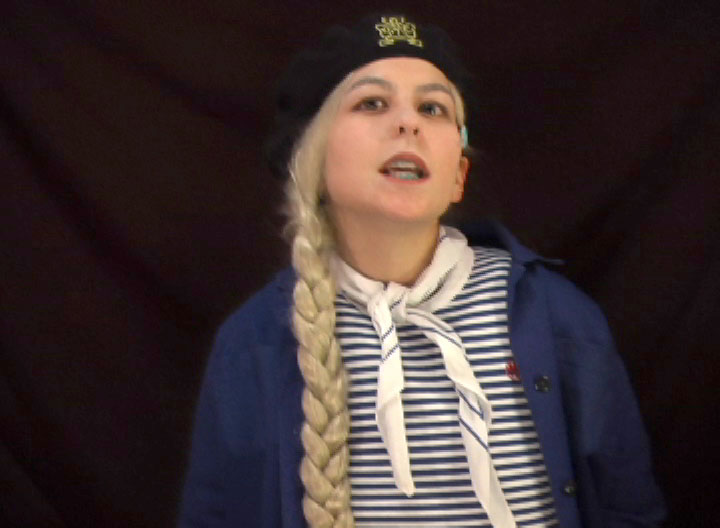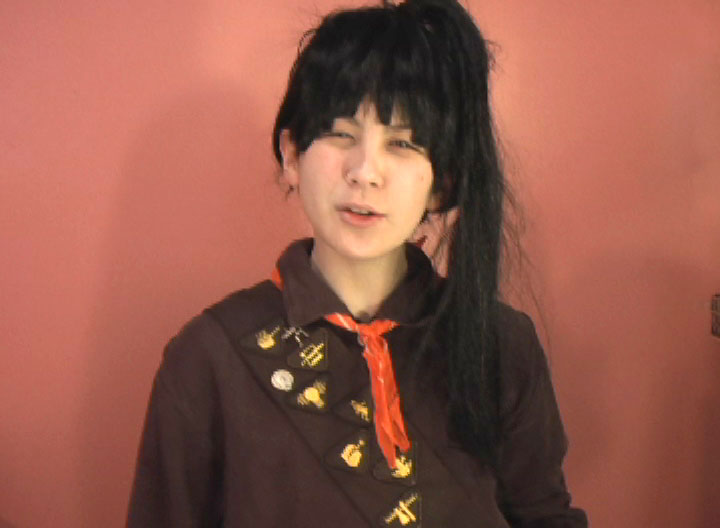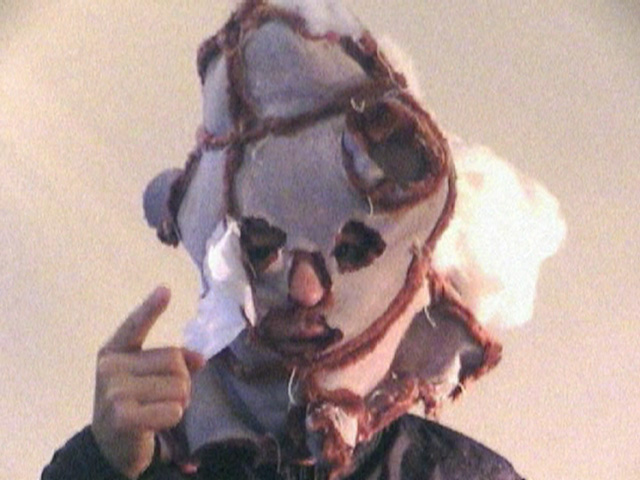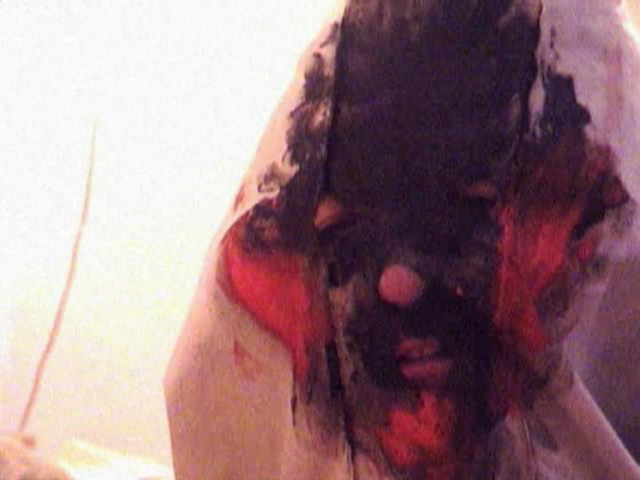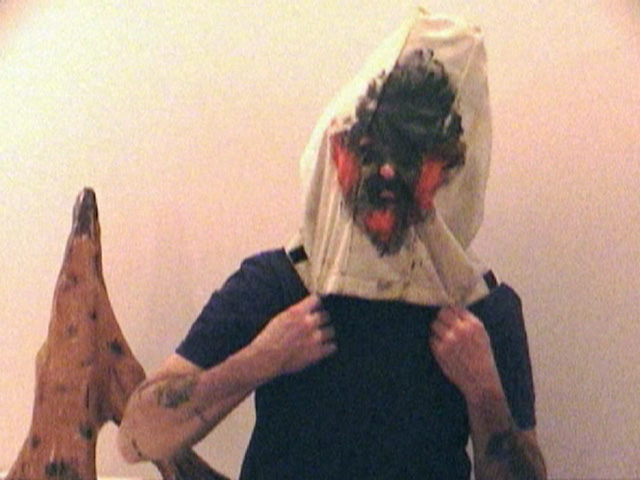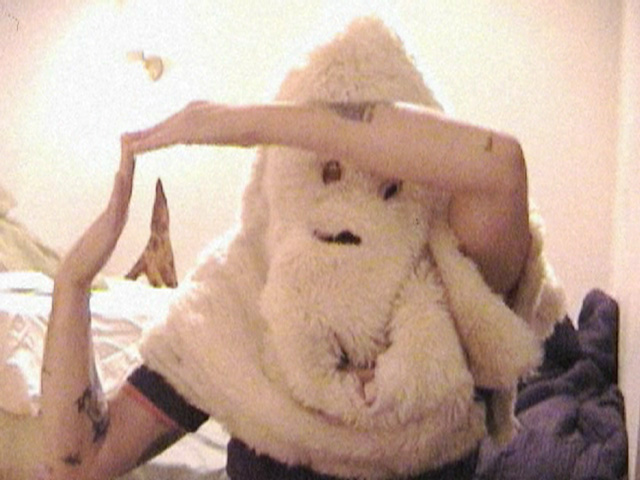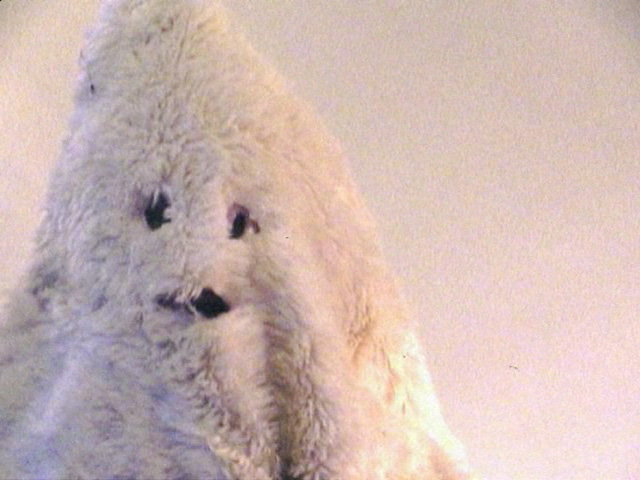Part of Winter 2010
Pleasure Dome and Trinity Square Video are pleased to present the two-person exhibition Don’t Talk to Strangers featuring a new single-channel video by Los Angeles artist Harry Dodge and video and prints by Toronto artist Alison SM Kobayashi. Both are gifted performance artists who portray a range of eccentric invented characters; they employ video to show these personalities scrutinized by the mediating force of the camera. Under its gaze, they act out a kind of highly theatrical multiple personality disorder. With each persona, the artists test out not only different identities but more importantly, different ways of reacting to the pressure of being recorded.
In Dodge’s This Beast Called Force (USA, 18 min, 2009) a character of unstable identity (and uncertain gender) is videotaped while sitting in a room with the television on. Instructed to be as “free” and “loose” as possible, this test subject spars with the TV images that flow by (weather reports, horror movies, etc.), offers harebrained theories about human digestion and magic brown dwarves, and describes and acts out disturbing movie scenarios. This volatile figure sports three grotesque masks—one appears to be made out of elaborate, flowery foam; another, a paint-smeared tote bag; the last, a torn white acrylic fur rug—with each marking a different persona. Whether Dodge’s character(s) are cogent and articulate or lost in nonsense and stutter, they plunge us into a sustained and sometimes frightful wrangle with forces that remain unnamable, unclassifiable.
While lighter in tone, Kobayashi’s DO GOOD (Canada, 11 min, 2009) also begins with a masked figure, a painfully shy little girl named Percy forced to do a (stilted) presentation explaining the brownie badge she has created (“Batman for a day”) and how she earned it. Ditsy Yoko, meanwhile, testifies of her love for animals, while keener Jenny warns us of the detrimental effects of TV (Dodge should take note) and chubby-cheeked Georgia encourages us to talk to strangers—unless they’re perverts. This ritual of forced testimonial about one’s ethical superiority seems designed to tame all the restless and reckless energies of childhood—the id of “this beast.” Kobayashi’s uncanny characterizations reveal all the bad behaviour, pubertal humiliations and failed attempts at maturity and normality that besmirch youth, all the mess that is unsuccessfully sublimated by the brownies into uniforms, gendered socialization and (supposedly) altruistic good deeds.
Kobayashi on DO GOOD:
I catalogued my family’s home video collection.
I came across videos of my sister and I in Brownie and Girl Guide ceremonies.
It made me want to DO GOOD.
It made me want to invite others to DO GOOD too.
Five Brownies created new badges.
Each Brownie made a video that explained what was required to earn her badge.
Harriet “Harry” Dodge is a visual artist working in video and sculpture, with a focus on shape, unnameability, and hybridity/defiance. She has been acclaimed for her large-scale, performative monologues and her award-winning a feature-length movie, By Hook or By Crook (2000), which she co-wrote, edited, and directed. Dodge graduated with an MFA (2003) from Milton Avery Graduate School of the Arts at Bard College, and became part of a collaborative videomaking team whose work has been exhibited nationally and internationally, including at the 2008 Whitney Biennial. Dodge is co-founder of the collaboration TESTHOLE, which has undertaken a series of community-based, interventions/partnerships experimenting with decomposition and fertility. Dodge teaches art and writing at CalArts, UCLA and UCSD.
Alison S.M. Kobayashi is a visual artist working in video, performance, installation and drawing. Working with found narratives from a variety of sources, including lost letters and discarded answering machine tapes, Kobayashi imagines identities for the subjects of these marginalized media. She incarnates a panoply of personas that are both studiously and playfully rendered. In her live and video-based performances she synthesizes both the nuances as well as the stereotypes of each of the characters she embodies. Kobayashi won the TSV Artistic Vision Award for Best Local Short Film at the Toronto Reel Asian Film Festival (2006) and was awarded the Mississauga Arts Award for Best Emerging Artist (2007). Her films have been shown in Canada, the U.S. and Hong Kong.


